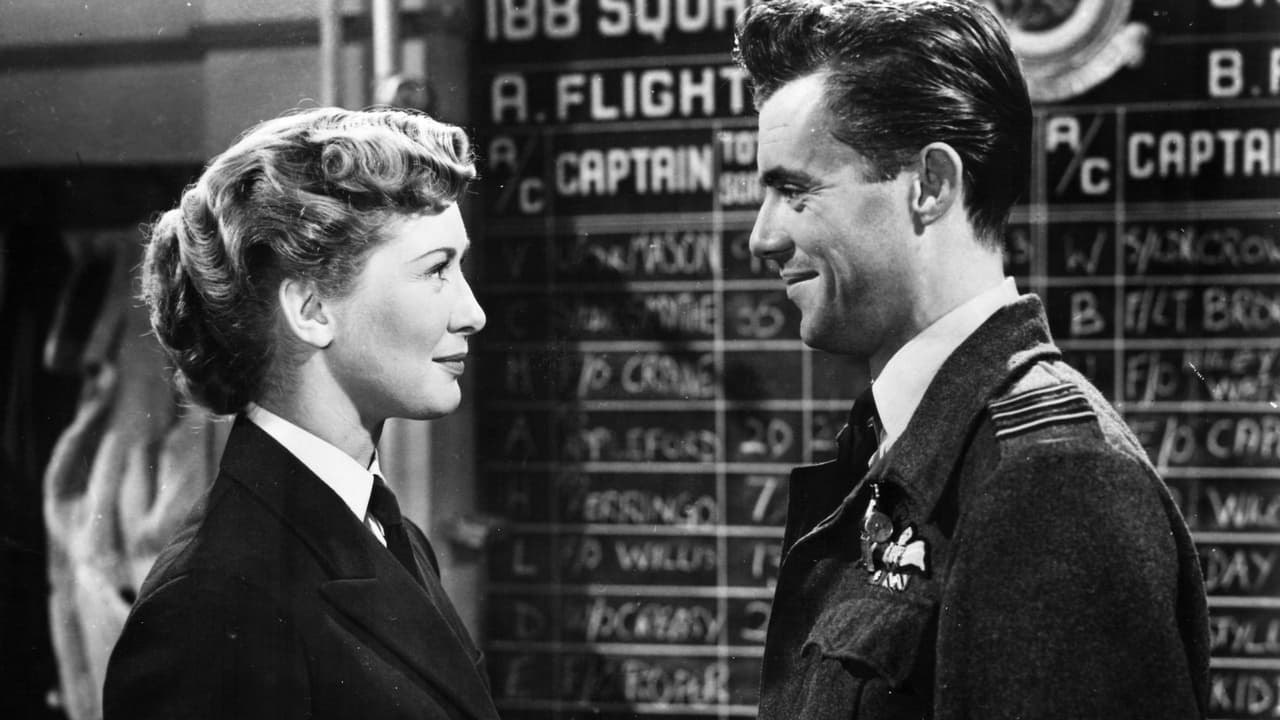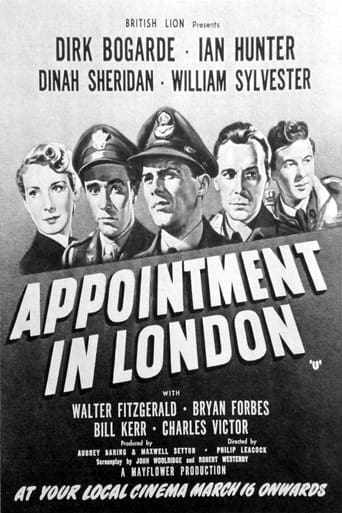

It has something of an inauspicious title, in that it doesn't do justice to the film making craft and subject matter on offer here in Phillip Leacock's film. Leacock and his lead man, the splendidly regal Dirk Bogarde, produce a war film of undoubted human depth. There's no sledge hammer tactics to try and curry favour with the critics and film goers alike, no clichés bogging the narrative down, this is an honest to goodness telling of the emotional trials, strains, fears and peeves of a Bomber Command Squadron in England preparing for a mission during WWII 1943. Even the inevitable romantic threads are handled with skill by the makers, never cloying and adding impact as the heroes get ready for the big bully off. Some of the action sequences show their age, but that's fine in the context of old time cinema, while the likes of Twelve O'Clock High (which came four years before this was released) set the bar too high for Leacock's film to be unfairly compared with. Yet this earns its stripes, very much so, because as those wonderful Avro Lancaster's take to the skies and thunder though the clouds, you realise you care about every single one of those involved in the mission, both in the air and on the ground. 7.5/10
... View MoreI had seen this film when I was in school where it was shown as part of educational films screened by one of my schoolmasters who had himself served in the Royal Indian Air Force in Burma.Today I own a copy on DVD. The exploits of people in Bomber Command is brought out with extreme accuracy to the screen by creating an atmosphere that is taut and realistic. Dirk Bogarde gives one of his best performances as the Wing Commander who is definitely cracking under the stress of command but does not want to accept it. The scenes where he gives Bryan Forbes a dressing down will certainly strike a chord where his sense of responsibility to the team is exposed. The accuracy of operations of RAF Bombers during night sorties right from the point of take off, to the tension of the ground staff till their return is brilliantly photographed. There are no clichés or extended heroics quite common in similar films but dark realism of survival during the war with the atmosphere of the airfields and aircrew intact. Being the son of an Air Force officer who did some war service in India the realism is striking. I would certainly recommend it to the younger viewers who need to study such situations.
... View MoreFrom my summary you are entitled to think I found this an inferior rip-off of Twelve O'Clock High and you'd be correct. Dirk Bogarde was no Gregory Peck and though he gives the battle fatigue resulting from leading 80 + missions his best shot he doesn't quite cut it. Of course, if you haven't seen Twelve O'Clock High (released a couple of years earlier) chances are you'll enjoy this take on life on a bomber station in World War Two. All the usual suspects are wheeled out from Brian Forbes to Sam Kydd and there's even William Sylvester and Bill Kerr to ensure a balance of nationalities. Unlike Twelve O'Clock High the film can't resist introducing the female element so Dinah Sheridan is trotted out as the target for a half-hearted rivalry between Bogarde and Sylvester. Check it out if you must then check out a real movie on the same subject, beginning with Twelve.
... View MoreThis is an unusual film. As others have commented it is well made, tautly scripted and has very good central performances. But that isn't what singles it out.It's commonly thought that night time area bombing by the RAF was a hit or miss affair, quite different from daylight precision bombing done by the USAAF. Whilst no one can argue that targets were easier to see during daylight hours, both the RAF and the Luftwaffe developed highly accurate methods of hitting their targets at night. In the fateful Dresden raid in February 1945, almost 95% of the RAF bombload fell within one mile of the markers placed with 50 metre accuracy by the Mosquito target illuminator aircraft. The following day, a quarter of the American daylight force sent to follow up bombed Prague, having mistaken one bend in the River Elbe for another. This film depicts, at length, the method of target marking the flight path using coloured airburst flares, eliminating 'creepback' by approaching the target along different vectors, air and ground marking the target and using a 'Master Bomber' to control the incoming streams and give bomb aimers feedback on accuracy.No medal was struck for Bomber Command and many of the crew themselves felt their contribution was best forgotten, so this film is one of the few accurate testaments to their courage.
... View More